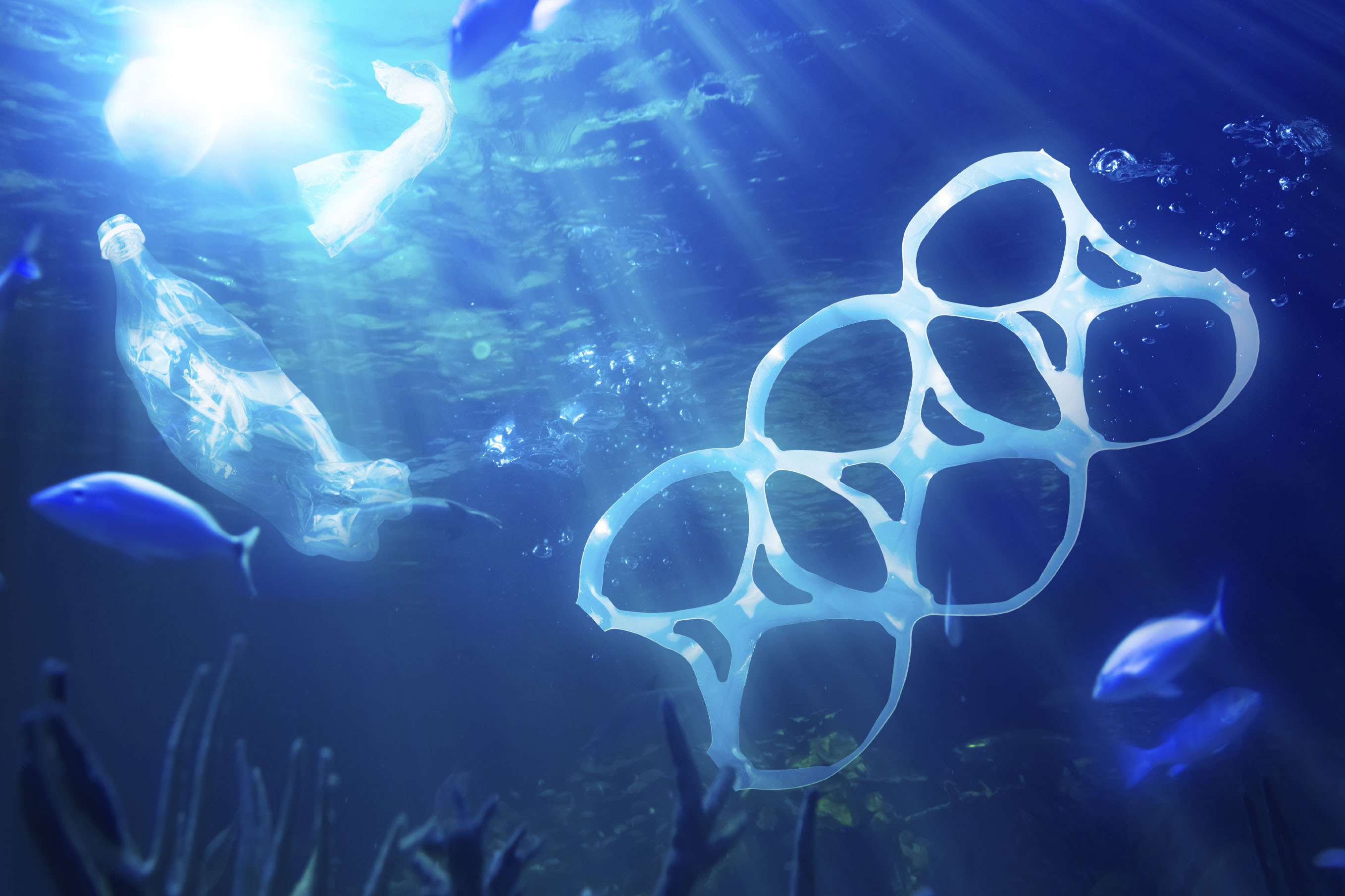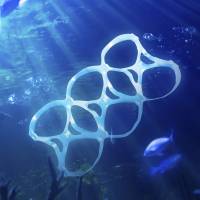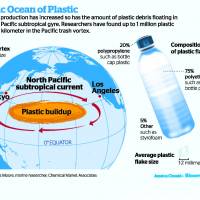Search online for "Pacific gyre" and you'll get about 455,000 results in 0.15 seconds. Try "Pacific trash vortex" and you'll get 474,000. Here's another: Do a search for "Pacific garbage patch" and, in 0.40 seconds, you'll have 593,000 hits.
If you've heard horror stories about massive islands of floating plastic garbage in the Pacific and elsewhere, some bigger than the state of Texas — that's roughly the size of France — here's some good news. Sort of.
According to the U.S. government's National Oceanic and Atmospheric Administration, due to winds, rotating currents and other features of the ocean, there are a number of gyres, or vortexes, where waste congregates in the open ocean, along with seaweed, plankton and other marine life.
These areas of convergence tend to have higher concentrations of plastic waste and other debris, such as lost fishing nets, but "much of the debris is actually small pieces of floating plastic that are not immediately evident to the naked eye," the NOAA reports.
The bad news you might have suspected. The entire ocean is awash with humans' trash of all sorts, and plastic is a primary component of that.
"The very thing that makes plastic items useful to consumers — their durability and stability — also makes them a problem in marine environments. Around 100 million tonnes of plastic are produced each year, of which about 10 percent ends up in the sea. About 20 percent of this is from ships and platforms, the rest from land," reports the Greenpeace International website.
As with most of our garbage, once it's out of sight it's also out of mind. Still, if you want a better sense of what's bobbing and swirling offshore, go for a stroll along the nearest beach. You'll get the drift.
Just about anywhere on the planet, you will find much the same types of waste along our coasts. Plastic bottles and bottle caps, pieces of foam, plastic bags, disposable lighters, shoes, pieces of netting and rope — and myriad other unidentifiable materials that have washed ashore.
It's not hard to imagine the harm that plastic waste can wreak in the world's seas, but do a search for "plastics killing marine life" and you'll find some graphic examples of what just one bit of netting or plastic can do to birds, turtles and seals.
"Many seabirds and their chicks have been found dead, their stomachs filled with medium-sized plastic items such as bottle tops, lighters and balloons. A turtle found dead in Hawaii had over 1,000 pieces of plastic in its stomach and intestines. It has been estimated that over a million seabirds and 100,000 marine mammals and sea turtles are killed each year by ingestion of plastics or entanglement," reports Greenpeace.
If Greenpeace is correct, every year about 8 million tons of our plastic waste on land ends up in our ocean. This isn't really so surprising, though, since most of us in the developed world have no idea where our wastes go. We do a bit of recycling here, a bit of separating there — and the rest we assume someone else is managing correctly.
How many of us truly care about all that plastic waste bobbing about, unseen, in the ocean? And even if we care, what can we do, short of heading out to sea and seining for bits and pieces of plastic?
Funny you should ask.
Earlier this month, the Grammy award-winning musician and fashion entrepreneur Pharrell Williams, and bad boy of the high seas Captain Paul Watson, of the nonprofit Sea Shepherd Conservation Society, launched a project that will give consumers a chance to source their purchasing offshore — literally.
According to a Feb. 9 story carried by the Environmental News Service, "the Vortex Project will take plastic waste from oceans and shorelines, and recycle, enhance and reuse it for yarn, fabric and other elements in consumer producs."
Recycling plastics into clothing fiber is nothing new, but the Vortex Project aims to make ocean-waste awareness into high fashion. Its first collaboration will be a line of denim clothing, named Raw for the Oceans, that will be produced in a partnership between Dutch designer brand G-Star Raw and U.S. firm Bionic Yarn, which will recycle the waste plastic into high-tech fiber.
Williams, who co-owns Bionic Yarn, will also design the clothing line.
He and Watson announced Raw for the Oceans on Feb. 8 during a star-studded event at the American Museum of Natural History in New York City during New York Fashion Week.
"Plastic is choking our oceans and precious marine wildlife at an unprecedented rate. Drinks straws, single-use bags, six-pack rings, drink lids and more are ensnaring marine animals or blocking their digestive systems, killing these magnificent creatures. It's time humanity takes responsibility for our actions and cleans up the mess we've made," Watson told the crowd, according to the ENS report.
Had it been Tokyo, Watson would have been carted off to jail as a terrorist of the tides. However, in New York and elsewhere he is more often lionized as a high-seas hero.
All of this could pose an ethical dilemma of sorts for hip, yet patriotic, Japanese people who want to wear the new denims, but don't feel particularly comfortable endorsing Watson and the anti-whaling activities of Sea Shepherd that focus on Japan's totally unnecessary annual slaughter — for "research" purposes — in the Southern Ocean.
Watson and his tactics aside, there is no doubt that our seas are at high risk and with them human society.
"Of all the threats looming over the planet today, one of the most alarming is the seemingly inexorable descent of the world's oceans into ecological perdition," wrote Alan B. Sielen in the November/December 2013 issue of the journal Foreign Affairs, in an essay titled "The Devolution of the Seas." Sielen is a senior fellow at the world-famous San Diego, California-based Scripps Institution of Oceanography.
So, Messrs. Williams and Watson, here are a couple of questions:
Is expensive, designer denim, made from just a few truckloads of ocean plastic, the best way for you and G-Star Raw to leverage your high profiles for the benefit of the world's oceans? What about all those people like myself, who can wear jeans but are banned from squeezing into designer denims by their teenage offspring?
Surely it makes more sense to hawk ocean plastic fibers to every apparel company on the planet in order to make a meaningful commitment, rather than to make a one-company catwalk splash?
In short, how can you really make a difference and help move consumers from fashionable concern to sustainable commitment?
No rush getting back to me, I can wait.
Stephen Hesse is a professor in the law faculty of Chuo University and associate director of Chuo International Center. He can be reached at [email protected].





















With your current subscription plan you can comment on stories. However, before writing your first comment, please create a display name in the Profile section of your subscriber account page.